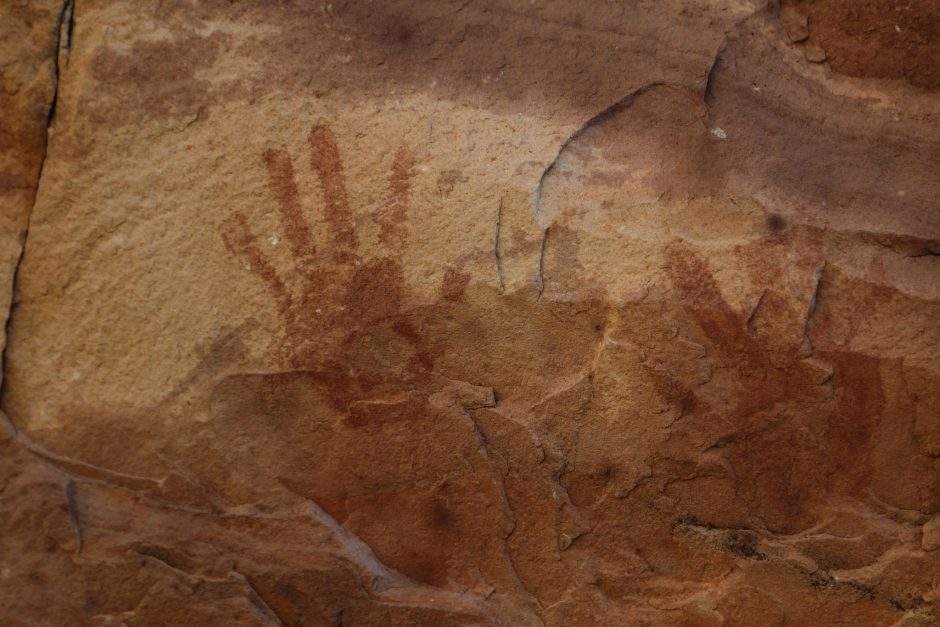
Cave art found in Nevada (Don McCullough, Flickr).
Until about half a million years ago, early humans living in East Africa had basically one kind of tool: large, heavy stone axes. For hundreds of thousands of years, this technology didn't change.
But then, around 500,000 years ago, human ancestors began trading for obsidian and using it to make smaller, more delicate tools and spearheads. They also began making black and red paint and using it to decorate stones and possibly their bodies.
So, What sparked the change? Scientists at the Smithsonian's Human Origins Program have found evidence of massive earthquakes and climate change that caused floods, thunderstorms, and long periods of drought.
Consequently, the giant ancestors of elephants, zebra, and baboons were replaced by antelope and other savanna animals.
So, proto-humans adapted. They most likely developed smaller tools and more refined spearheads because they were better for hunting the new game. And apparently, human bands learned to communicate with each other to trade information, tools, and maybe even food.
It's not clear what these early humans did with the black and red pigments. The scientists have found rocks painted with the colors, suggesting that our prehistoric ancestors had begun creating things not necessarily tied to simple survival.
The fact that climate change shaped human evolution shouldn't be too surprising. All living things evolve based in part on the environment around them. Neanderthals evolved to survive in a cold environment. Just as early humans in Africa changed to survive in a landscape reshaped by climate change.
If you're interested in learning more about how humans developed tools, you could read about Ötzi, known colloquially as a "glacier mummy," or you could read about how King Tut had a dagger forged from space materials.
Sources And Further Reading:
- Brooks, Allison S. Yellen, John E. Potts, Richard. Behrensmeyer, Anna K. Deino, Alan L. Leslie, David E. Ambrose, Stanley H. Ferguson, Jeffrey R. d'Errico, Francesco. Zipkin, Andrew M. Whittaker, Scott. Post, Jeffrey. Veatch, Elizabeth G. Foecke, Kimberly. Clark, Jennifer B. "Long-distance stone transport and pigment use in the earliest Middle Stone Age." Science 06 Apr 2018: Vol. 360, Issue 6384, pp. 90-94 DOI: 10.1126/science.aao2646
- Halton, Mary. "Changing environment influenced human evolution." BBC: Science & Environment.









